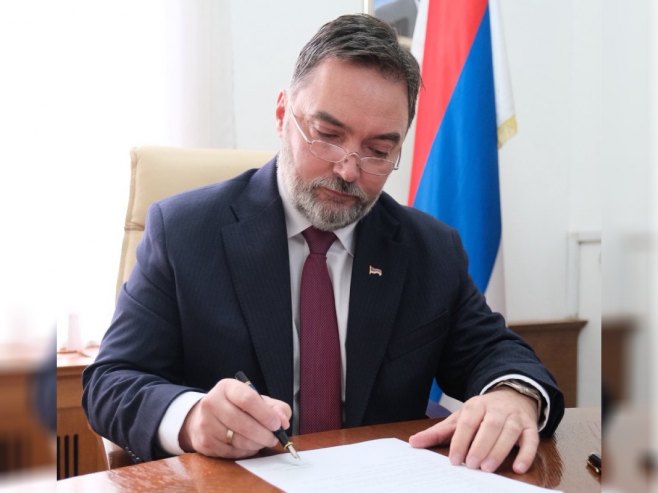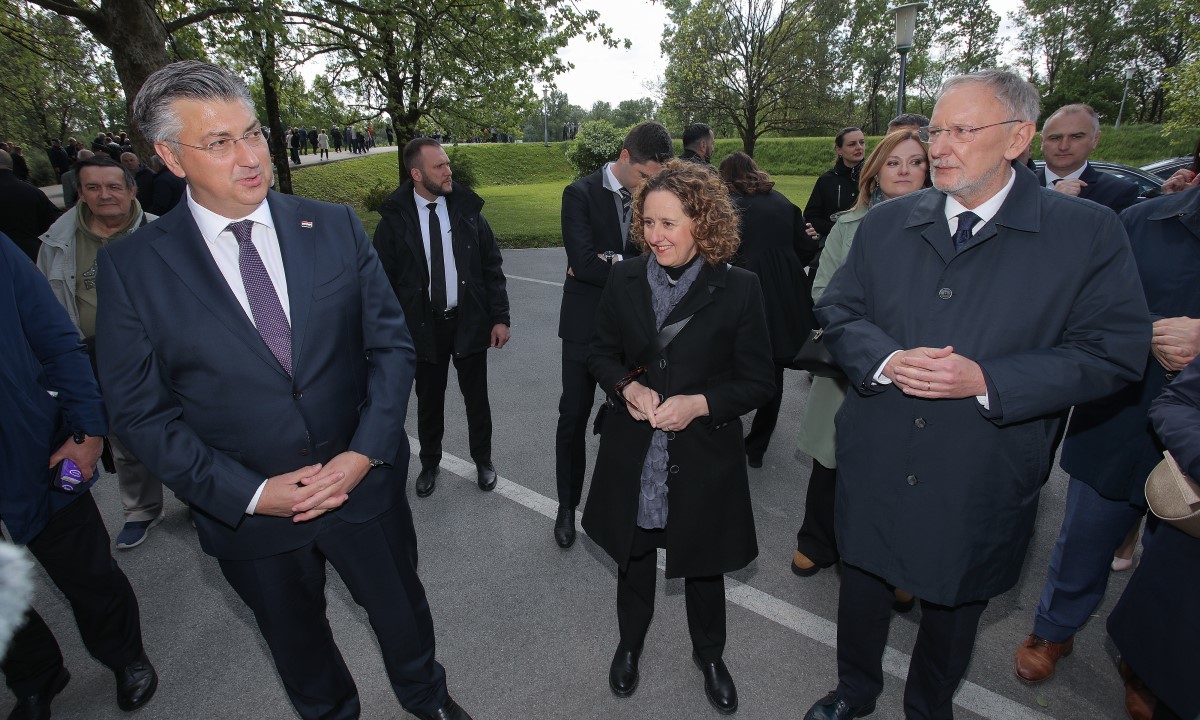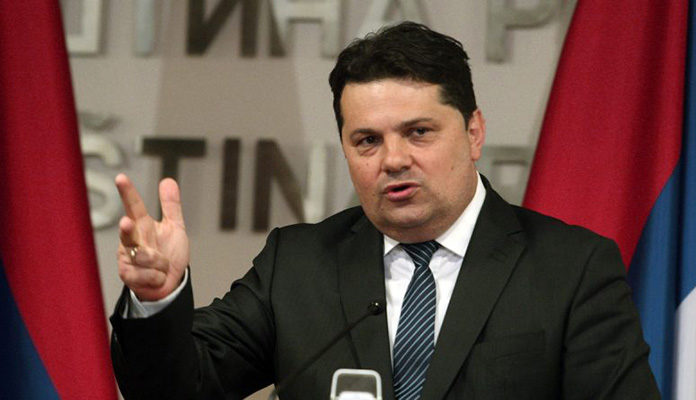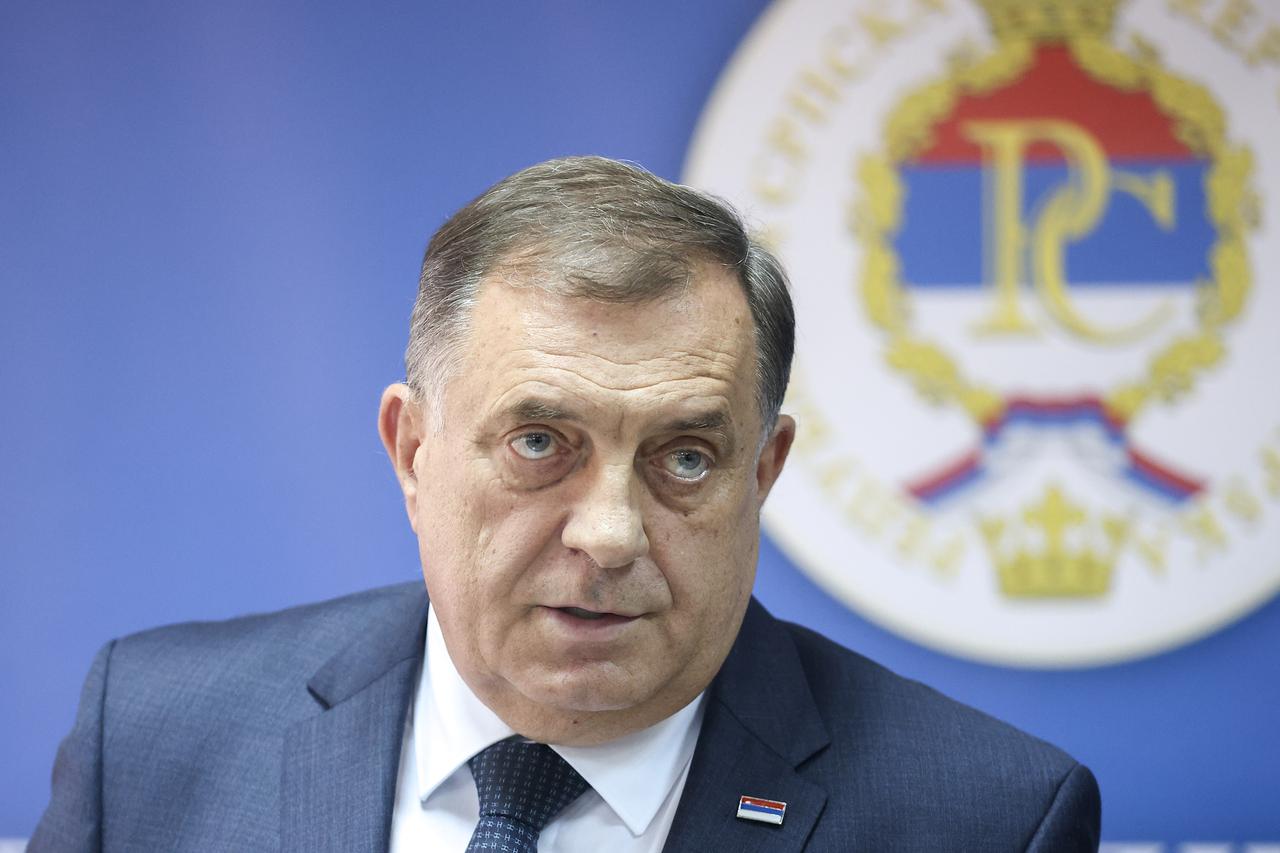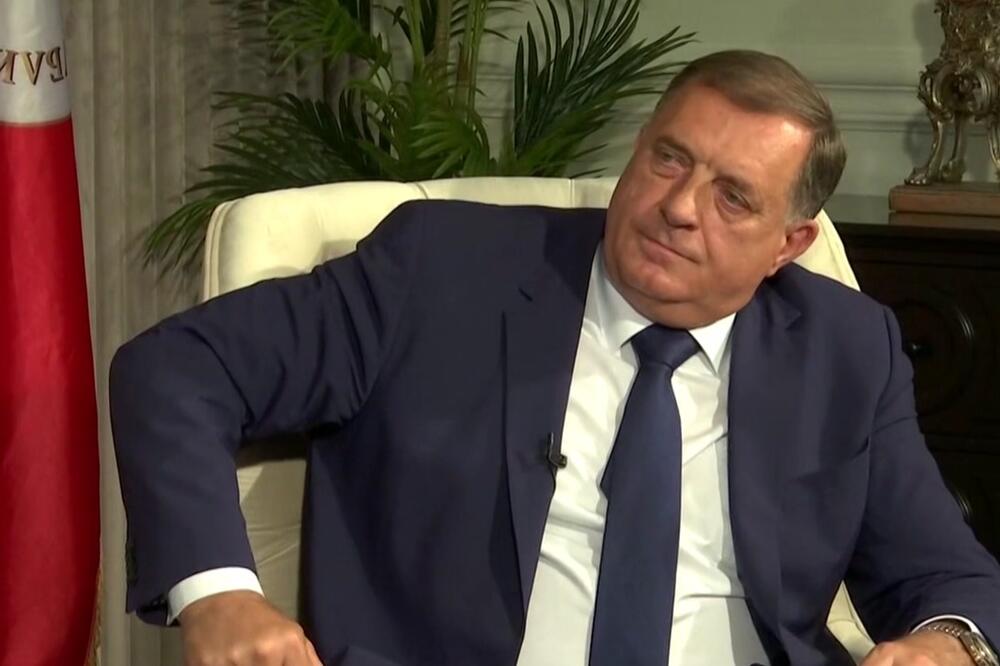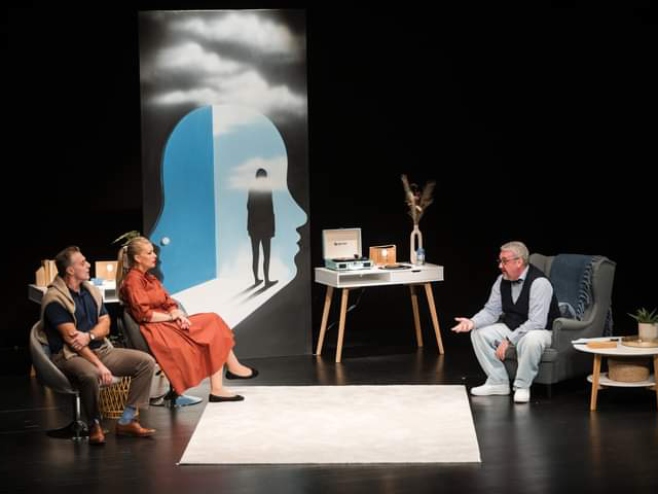Last November, the exhibition “Some Were Neighbors,” organized by the Holocaust Museum in Washington and Croatian institutions, was canceled at the last minute. The Croatian side, coordinated by the Ministry of Culture, explicitly rejected any possibility of associating the genocide in the NDH with Serbs. The Americans refused to agree to such an exhibition.
In November of last year, after months of preparation, plans for an exhibition organized by the Holocaust Museum in Washington and institutions under the Ministry of Culture’s management were abruptly halted at the last minute. The exhibition about the Holocaust and Ustaša crimes was not held because the Croatian side explicitly refused to include a statement on one of the panels that the Independent State of Croatia pursued a genocidal policy against Serbs. This scandalous information was confirmed to Novosti in conversations with multiple sources familiar with the matter. Disappointed and allegedly quite shocked, the Americans did not want to set up such an exhibition, considering that doing so would participate in revisionist politicization orchestrated by the Croatian side.
Reconstructing the entire story, Novosti unequivocally established that the government of Prime Minister Andrej Plenković, through the ministry led by Nina Obuljen Koržinek, had been involved in creating the international scandal from the very beginning. The main executor was Matea Brstilo Rešetar, director of the Croatian Historical Museum and president of the Governing Council of the Public Institution Memorial Area (JUSP) Jasenovac.
Details about the unrealized exhibition show that this event was precisely the zero point of a new state policy to separate Serbian suffering in the NDH from the word “genocide” at any cost, even at the risk of international disgrace. The exhibition was to be held at the end of November, as part of last year’s Croatian presidency of the International Holocaust Remembrance Alliance (IHRA), which brings together countries and NGOs to educate about the Holocaust. The Holocaust Memorial Museum in Washington, one of the largest in the world, considered this an ideal opportunity to set up its traveling exhibition “Some Were Neighbors” in Croatia. In addition to the standard panels showing the history of the Holocaust, the exhibition was designed to add specific local context in countries such as Hungary, Latvia, Lithuania, Poland, or Croatia.
Planning began in June. Experts from the Croatian Historical Museum and JUSP Jasenovac were engaged to create the Croatian addition. Dubravka Đurić Nemec, advisor to Minister Obuljen Koržinek, was involved from the first to the last day on behalf of the Ministry of Culture and Media, which oversees the mentioned institutions. Both Brstilo and Đurić Nemec are part of the Croatian delegation to the IHRA, the former as an observer and the latter as a member. The head is Sara Lustig, Plenković’s advisor on the Holocaust.
Our sources say that the beginning was promising. In the first version, written by the Croatian side in mid-September 2023, the enactment of racial laws against Jews, the resolution of the “Jewish question,” and a brief overview of the implementation of the Holocaust in the NDH were described. In addition to the destruction of Jews and Roma, it was stated that the persecution of Serbs was unique to the NDH. After suggestions from the American side, the Croatians added in a new text proposal in mid-October, a month later, that the “genocidal policy was directed towards Serbs.” This addition about genocide led to a complete reversal in the behavior of the Croatian side. At a meeting held shortly afterward, Brstilo Rešetar announced to the American partners “independent” reviewers, experts who would review the entire exhibition text to clean up any historiographical errors. She did not say who these experts were, only that she would send their comments on the draft.
Last October, when the material should have already been completed, the Croatian side submitted their observations via email correspondence. Along with a few valid comments and corrections to the exhibition documentation, they attacked the existing description of Serbian suffering in the NDH. They found the term “genocidal policies” towards Serbs problematic. Instead, one of the reviewers suggested describing it with terms like mass killings and state terror, omitting any references to genocide. The explanation provided, which we managed to obtain in full, was particularly telling: “in legal terms by definition but also in historiography, the term genocide is not used, although there is intent by certain groups.”
In reality, there are few serious historians who deny that the NDH authorities carried out genocidal policies or genocide against Serbs. Novosti recently published an article about how Raphael Lemkin, the Polish lawyer who coined the term “genocide,” judged that the genocidal policy in the NDH was primarily directed against Jews and Serbs. Contemporary historians researching this topic and who have no issues with such an assessment are typically not Croatian nationalists with history degrees. These individuals, as we see, serve the Croatian government to review international exhibitions and deny “genocidal policies” or “genocide” against Serbs in the NDH.
Elsewhere, they deemed it redundant and unnecessary to state that the persecution of Serbs was “characteristic” of the NDH, arguing that it is not necessary to highlight this because other quisling states also had social groups subjected to their terror. The author did not clarify how other states and their terror relate to a localized exhibition intended to be held in Croatia, about the suffering of Jews and other peoples (!) exclusively in the NDH. Instead, he suggested that it should simply state that Serbs were victims of persecution in Pavelić’s creation. Following this strategy, in another place, anonymous experts separated Jews and Roma from Serbs, placing the Serbian population alongside “political opponents.”
In just a few changes, the targeted pogrom of Serbs inherent in the Ustaša regime disappeared. If the reviewers deemed it inappropriate to mention “genocidal policies” alongside them, it was entirely expected that they would ultimately remove them from the context of Roma and Jews, whose genocides they acknowledge.
Apparently familiar with the local context and likely briefed by experts on the NDH, the American organizers of the exhibition reportedly expressed, to put it mildly, concern about these changes, noting that a series of new information was introduced at the last minute, less than a month before the exhibition, some of which contained historiographical inaccuracies. They reiterated that the exhibition should address the Holocaust and the local state persecution of other targeted groups. According to our information, they firmly believed that including the statement about genocidal policies towards Serbs was indisputable. Emphasizing the considerable consensus among historians on this topic, they repeatedly referred to the most relevant source – JUSP Jasenovac, a partner in the exhibition, an institution that has acknowledged the Ustaša genocide against Serbs on its official pages and exhibitions since its inception. Therefore, they reinstated most of what the Croatian reviewers had declared unnecessary and even incorrect in the proposed text.
Guided by the advice of hired historians behind the scenes, the Croatians then refused to leave the term “genocidal policies” on the introductory panel when it came to Serbs. In subsequent negotiations, they did not agree to the revised sentence stating that genocidal policies and other forms of discrimination were directed towards Jews, Roma, and Serbs. They also rejected the alternative description of the treatment of Serbs as acts of genocidal mass murder.
After exhaustive stubbornness from the Croatian co-organizers, the American side reportedly expressed their disappointment once again with their behavior, primarily because they introduced politically controversial information about the past at the last minute, contrary to the official stance of one of the partners, JUSP Jasenovac. Therefore, they once again requested that “genocidal policies” be included next to the mention of Serbs. The key communicator from the Croatian side, incidentally also the head of the Governing Council of the very same JUSP Jasenovac, which acknowledges the “controversial” genocide, Matea Brstilo Rešetar, allegedly adjusted the strategy. She explained the persistent refusal to link genocidal policies with Serbs in the exhibition by citing a lack of scholarly and legal research on the topic (!).
Realizing that the Americans would not relent, Brstilo Rešetar proposed including “genocidal policies,” but now without mentioning any specific group in the subsequent sentence. Accordingly, instead of the “genocidal” iterations offered by the Americans, just ten days before the exhibition, the Croatians once again altered the text and included “mass crimes” next to Serbs. “Genocidal policies” were placed in the introduction but without specifying any group subjected to such practices. Thus, the Croatian government’s policy, garnished with the decisive contribution of anonymous reviewers, was perverted to the end: they would rather omit genocide altogether than acknowledge it against Serbs.
Hoping their local partners would change their minds, just a few days before the exhibition, the American Holocaust Museum once again attempted to include genocidal policies towards “Jews, Roma, and Serbs,” citing specific backgrounds for each group. Reportedly, they once again expressed regret that the Croatians were clearly politicizing an exhibition intended to be educational. Brstilo Rešetar then hid behind the expertise of the engaged reviewers, suggesting that through them, the Croatian side was presenting historical truths all along.
Indirectly, they accused the Holocaust Museum staff of insisting on falsehoods. In the discussion about the exhibition referencing World War II events, Brstilo Rešetar then introduced a nuclear option – the October 7 terrorist attack by Hamas on Israel. According to the information we obtained, Brstilo Rešetar told them that in light of the said attack and the rise of antisemitism in Europe, it was most important from Croatia’s IHRA presidency to jointly condemn these events, rather than creating controversies that no one needed. As if anyone, besides the Croatian side and its pro-Ustaša policy, was generating any controversy in this story. She also suggested that due to the lack of consensus on the content (Croatian denial of genocide against Serbs, ed.), the exhibition be “postponed” for another time.
From the very beginning, the government of Prime Minister Plenković, through the ministry led by Nina Obuljen Koržinek, was involved in creating the international scandal. The main executor was Matea Brstilo Rešetar, director of the Croatian Historical Museum and president of the Governing Council of JUSP Jasenovac.
The plan was obvious: if it can’t be done our way, we’ll rather sabotage the entire project.
Thus, quietly until this article, Croatia caused an unprecedented revisionist scandal on the international stage. The project may have failed, but that doesn’t mean the hosts didn’t learn solid lessons from it. The denialist arguments they polished in preparing the exhibition, along with the same anonymous experts, were used by the Croatian government, led by the Ministry of Culture, to launch a coordinated attack on Jasenovac, a symbol of the Ustaša genocide against Serbs. They evidently did not forget that the American partners referred to JUSP Jasenovac and its acknowledgment of the genocide against Serbs. Unofficially, we learned that during the exhibition preparations, the Croatian side would dismiss every American citation of the Jasenovac institution, claiming that there were many errors on their pages.
In November 2023, when it was already clear that the exhibition with the American Holocaust Museum would not be held, the Ministry of Culture, according to the weekly Nacional, requested JUSP Jasenovac to send them the text of new informational panels for review, which were suggested by the IHRA to be placed at the former camp site. Although the experts from this institution clearly linked genocide with Serbs in the first version of the text, just as with the exhibition, the Ministry of Culture removed the mention of genocide. In line with the final phase of unsuccessful negotiations with the Americans, the terms “genocide” and “Holocaust” were removed alongside mentions of Roma and Jews. They stated that they had also engaged reviewers for the revision of the first version of the text, without mentioning their names. Efforts to determine their identities were in vain by the media, NGOs, and the JUSP Jasenovac Council, which includes representatives of the nations that were victims of NDH’s genocidal policies.
A few months after the “revision” of the exhibition panels at Jasenovac, in May 2024, historian Vladimir Geiger analyzed a text published on JUSP Jasenovac’s website in 2007 on the CroFacta portal. He deemed the claim that a meeting between Nazis and Ustaše in June 1941 agreed on resolving the “Serbian question,” namely a genocidal policy, to be unfounded. Shortly after the text was published, Brstilo Rešetar, as the head of JUSP Jasenovac, sent a letter to director Ivo Pejaković, urgently requesting the removal of these and other “historiographical inaccuracies” from the website. It can only be speculated what these inaccuracies were. However, if the genocidal intent was removed via Geiger’s text, then any mention of genocide elsewhere in this institution would become redundant. Contrary to the reality that unfolded from 1941 to 1945. Pejaković immediately resigned, later explaining it was due to months of disagreement with his employers and their efforts to institutionally deny the genocide against Serbs in the NDH.
Minister Obuljen Koržinek herself personally got involved, announcing a “revision” of the entire official JUSP Jasenovac website. There is no doubt that the reviewers will again be unnamed “experts” who have shaped a terrifying state stance towards World War II over the past year. Minister’s statement on what exactly will be sought and removed speaks volumes. She stated that Jasenovac should henceforth convey knowledge about the Holocaust against Jews, the genocide against Roma, and “mass crimes” against Serbs. Just as they planned while working on the failed exhibition.
For the purposes of this article, Novosti sought responses from the Ministry of Culture, Brstilo Rešetar, and Sara Lustig, head of the Croatian IHRA delegation. They asked who decided and why to exclude genocidal policies from mentioning Serbs and requested the names of the publicly unknown exhibition reviewers. An inquiry was also sent to the Holocaust Museum in Washington. By the conclusion of the article, no one had responded to the questions.
Source: Portal Novosti
